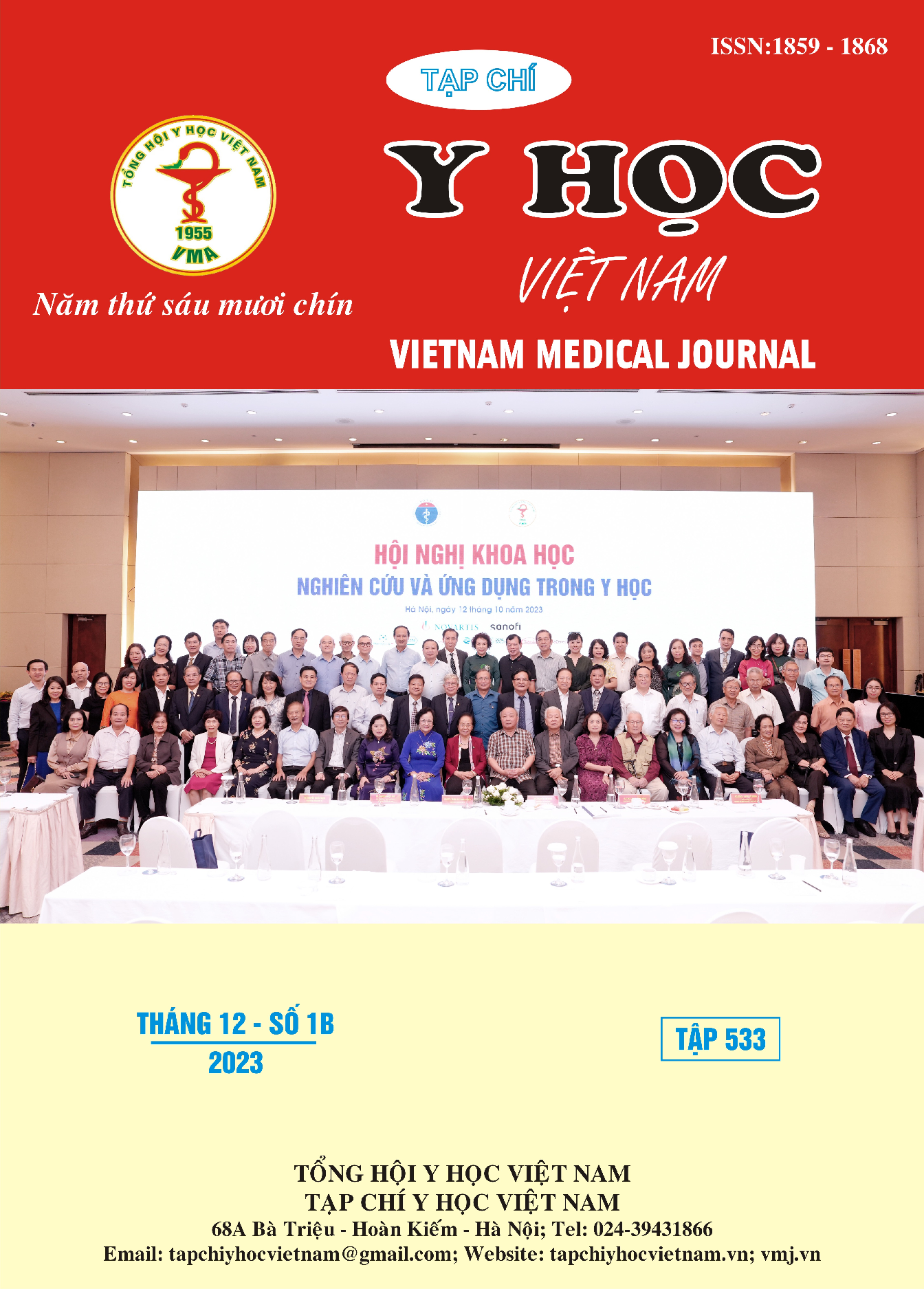THE EFFECT OF AMNIOREDUCTION TECHNIQUE IN REDUCING AMNIOTIC FLUID VOLUME TO TREAT POLYHYDRAMNIOS
Main Article Content
Abstract
Objective: To describe the clinical and subclinical characteristics of pregnant women with polyhydramnios requiring treatment at the Hanoi Obstetric and Gynecology Hospital. At the same time, evaluate the effecs of amnioreduction technique to reduce amniotic fluid when treating polyhydramnios. Materials and methods: The retrospective and prospective cross-sectional observational study was conducted on 30 cases of polyhydramnios patients who treated by amnioreduction at the Hanoi Obstetric and Gynecology Hospital from 1/2022 to 10/2023. Results: Polyhydramnios mostly occurs in twin pregnancies, primarily due to Twin-to-Twin Transfusion Syndrome, while idiopathic polyhydramnios is rare. Amnioreduction has been shown to significantly improve symptoms in pregnant women and delay labor until the fetus is viable.
Article Details
References
2. Hamza A, Herr D, Solomayer EF, Meyberg-Solomayer G. Polyhydramnios: Causes, Diagnosis and Therapy. Geburtshilfe Frauenheilkd. 2013 Dec;73(12):1241-1246. doi: 10.1055/s-0033-1360163. PMID: 24771905; PMCID: PMC3964358.
3. Kleine RT, Bernardes LS, Carvalho MA, de Carvalho MH, Krebs VL, Francisco RP. Pregnancy outcomes in severe polyhydramnios: no increase in risk in patients needing amnioreduction for maternal pain or respiratory distress. J Matern Fetal Neonatal Med. 2016 Dec;29(24):4031-4. doi: 10.3109/14767058.2016. 1153060. Epub 2016 Mar 7. PMID: 26948899.
4. Leung WC, Jouannic JM, Hyett J, et al. Procedure-related complications of rapid amniodrainage in the treatment of polyhydramnios. Ultrasound Obstet Gynecol 2004;23:154–8.
5. Luo QQ, Zou L, Gao H, Zheng YF, Zhao Y, Zhang WY. Idiopathic polyhydramnios at term and pregnancy outcomes: a multicenter observational study. J Matern Fetal Neonatal Med. 2017.
6. Trespidi L, Boschetto C, Caravelli E, Villa L, Kustermann A, Nicolini U. Serial amniocenteses in the management of twin- twin transfusion syndrome: When is it valuable? Fetal Diagn Ther 1997;12:15-20


